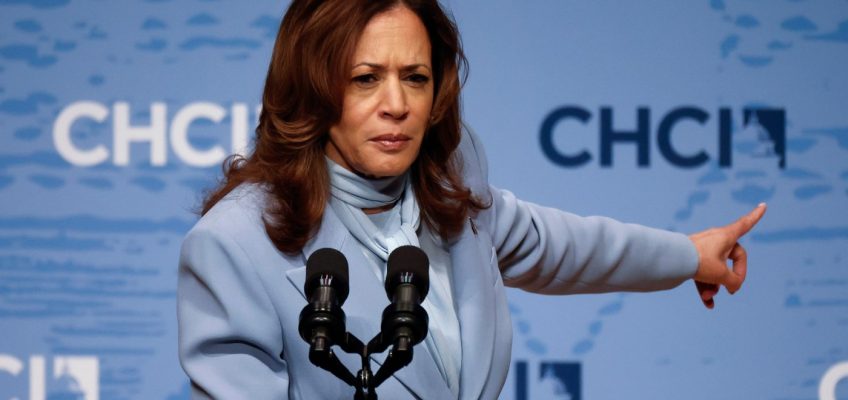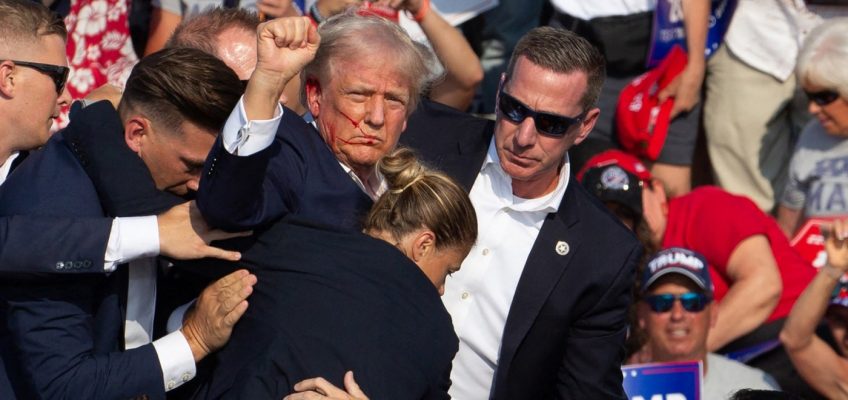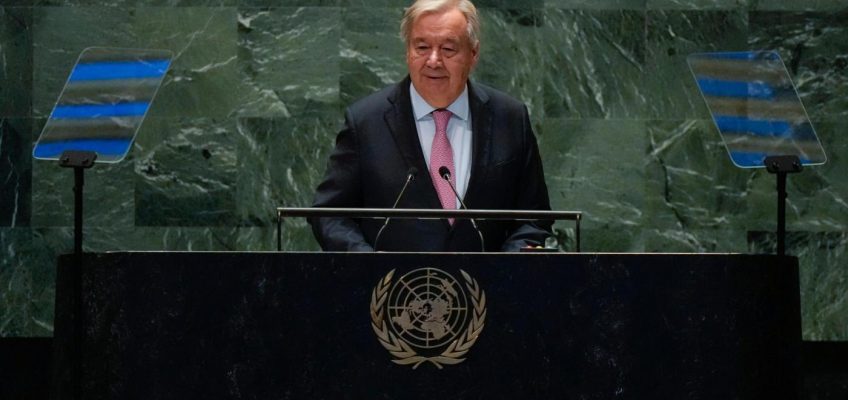By EDITH M. LEDERER and JENNIFER PELTZ
UNITED NATIONS (AP) — The head of the United Nations warned the gathered leaders of nations Tuesday that impunity, inequality and uncertainty are driving modern civilization toward “a powder keg that risks engulfing the world” — the latest in an increasing number of clarion calls from Antonio Guterres in recent years that the global situation is becoming intolerable and unsustainable.
“We can’t go on like this,” the secretary-general said in an alarming state-of-the-world address as he opened the annual high-level gathering of the U.N.’s 193 member nations.
Television networks broadcast outside the United Nations before the start of the 79th Session of the UN General Assembly, Tuesday, Sept. 24, 2024, at UN headquarters. (AP Photo/Julia Demaree Nikhinson)
He said the world is in “an era of epic transformation” facing challenges never seen before, with geopolitical divisions deepening, the planet heating and wars raging in the Middle East, Ukraine, Sudan and elsewhere with no clue how they will end.
“We are edging towards the unimaginable – a powder keg that risks engulfing the world,” Guterres told presidents, prime ministers and ministers in the vast General Assembly hall.
But he stopped short of saying hope was gone. “The challenges we face,” he said, “are solvable.”
It’s not an easy time in the world
The world leaders’ meeting opened under the shadow of increasing global divisions, major wars in Gaza, Ukraine and, Sudan and the threat of an even larger conflict in the wider Middle East. That, Guterres said, is not helped by what he described as a creeping impunity throughout the world — on the part of leaders and many others.
“I cannot recall a time of greater peril than this,” said King Abdullah II of Jordan.
Guterres called the situation in Gaza “a nonstop nightmare that threatens to take the entire region with it.” He said escalating air attacks acrorss the Israel-Lebanon border have put Lebanon “at the brink.” .In Ukraine, he said, there is no sign of an end to the war that followed Russia’s February 2022 invasion. In Sudan, he said, “a brutal power struggle has unleashing horrific violence — including widespread rape and sexual assaults” and “a humanitarian catastrophe is unfolding as famine spreads.”
The U.N. chief also pointed to “appalling levels of violence and human suffering” from Myanmar and Congo to Haiti, Yemen and beyond, and the expanding terrorist threat in Africa’s Sahel region. He said the Summit of the Future, which preceded Tuesday’s start of the nearly week-long global gathering, was a first step. “But we have a long way to go.”
At the two-day summit, rhe world’s nations adopted a “Pact for the Future” which lays out a 42-page blueprint to start addressing challenges from tackling climate change and poverty to putting guardrails on artificial intelligence and reforming the United Nations and other global institutions established after World War II to meet the needs and threats in the 21st-century world.
The UN leader blames ‘impunity’
Guterres said meeting the challenges of a world “in a whirlwind” requires confronting the three drivers of “unsustainability” – the uncertainty of unmanaged risks, the inequality that underlies injustices and grievances and the impunity that undermines international law and the U.N.‘s founding principles.
“A growing number of governments and others feel entitled to a `get out of jail free’ card,” he said — a reference to the classic board game Monopoly.
In his final speech before fellow leaders, U.S. President Joe Biden said he recognized the challenges of Gaza, Ukraine, Sudan and other global hotspots, but he remains hopeful.
“There will always be forces that pull our countries apart … a desire to retreat from the world and go it alone,” he said. “Our task is to make sure that the forces holding us together are stronger than the forces pulling us apart.”
Brazilian President Luiz Inácio Lula da Silva, whose country speaks first in a tradition dating to the early years of the U.N. criticized Israel’s attacks in Gaza and Lebanon saying: “The right to self defense became a right for vengeance, which prevents a deal for the release of hostages and delays a cease-fire.”
Lula decried the growth in global military spending for a ninth consecutive year to more than $2.4 trillion. “Those resources could have been used to fight hunger and deal with climate changes,” he said.
Turkish President Recep Tayyip Erdogan and Jordan’s Abdullah. Iran’s new president, Masoud Pezeshkian, was also on tap.
The Iranian leader accused Israel on Monday of seeking a wider war in the Middle East and laying “traps” to lead his country into a broader conflict. He pointed to the deadly explosions of pagers, walkie-talkies and other electronic devices in Lebanon last week, which he blamed on Israel, and the assassination of Hamas’ political leader Ismail Haniyeh in Tehran on July 31, hours after Pezeshkian’s inauguration.
“We don’t want to fight,” the Iranian president said. “It’s Israel that wants to drag everyone into war and destabilize the region.” Iran supports both Hamas in Gaza and Lebanon’s Hezbollah.
Hamas has been designated as a terrorist organization by the United States, Canada and the European Union.
Pushing the principle that ‘right makes might’
International Rescue Committee President David Miliband recalled that at the San Francisco conference in 1945 where the U.N. was established, then-U.S. President Harry Truman pleaded with delegates to reject the premise that “might makes right” and reverse it to “right makes might,” which was enshrined in the U.N. Charter.
“Almost 80 years later, we have seen the terrible consequences of the failure to flip this equation,” Miliband said. “In contexts like Gaza, Sudan and Ukraine, might is making right.”
U.S. Secretary of State Antony Blinken speaks during “Summit of the Future” on the sidelines of the UN General Assembly at the United Nations Headquarters in New York, Monday, Sept. 23, 2024. (Bryan R. Smith/Pool Photo via AP)
Facing mounting global humanitarian needs, unchecked conflict, unmitigated climate change and growing extreme poverty, Miliband challenged world leaders asking: “How will you strengthen, not weaken, the principles of the U.N. Charter for the next 80 years?”
The assembly’s annual meeting, which ends on Sept. 30, followed the two-day Summit of the Future, which adopted a blueprint aimed at bringing the world’s increasing divided nations together to tackle the challenges of the 21st century from conflicts and climate change to artificial intelligence and women’s rights.
The 42-page “Pact for the Future” challenges leaders of the 193 U.N. member nations to turn promises into real actions that make a difference to the lives of the world’s more than 8 billion people.
“We are here to bring multilateralism back from the brink,” Guterres said.
By adopting the pact, leaders unlocked the door, he said. “Now it is our common destiny to walk through it. That demands not just agreement, but action.”
Leaders embroiled in conflicts will speak
At last year’s U.N. global gathering, Ukraine and its president, Volodymyr Zelenskyy, took center stage. But as the first anniversary of Hamas’ deadly attack in southern Israel approaches on Oct. 7, the spotlight is certain to be on the war in Gaza and escalating violence across the Israeli-Lebanon border, which is now threatening to spread to the wider Middle East.
Palestinian President Mahmoud Abbas is scheduled to speak Thursday morning and Israel’s Prime Minister Benjamin Netanyahu on Thursday afternoon.
Zelenskyy will get the spotlight twice. He will speak Tuesday afternoon at a high-level meeting of the U.N. Security Council called by the United States, France, Japan, Malta, South Korea and Britain, whose foreign ministers are expected to attend. He will also address the General Assembly on Wednesday morning.
Edith M. Lederer, chief U.N. correspondent for The Associated Press, has been covering global affairs for more than 50 years. See more of AP’s coverage of the U.N. General Assembly at https://apnews.com/hub/united-nations




